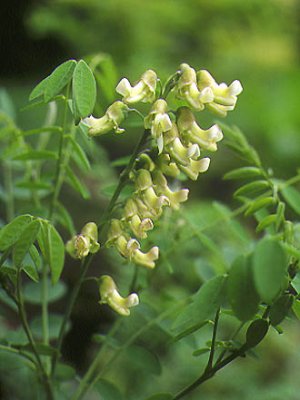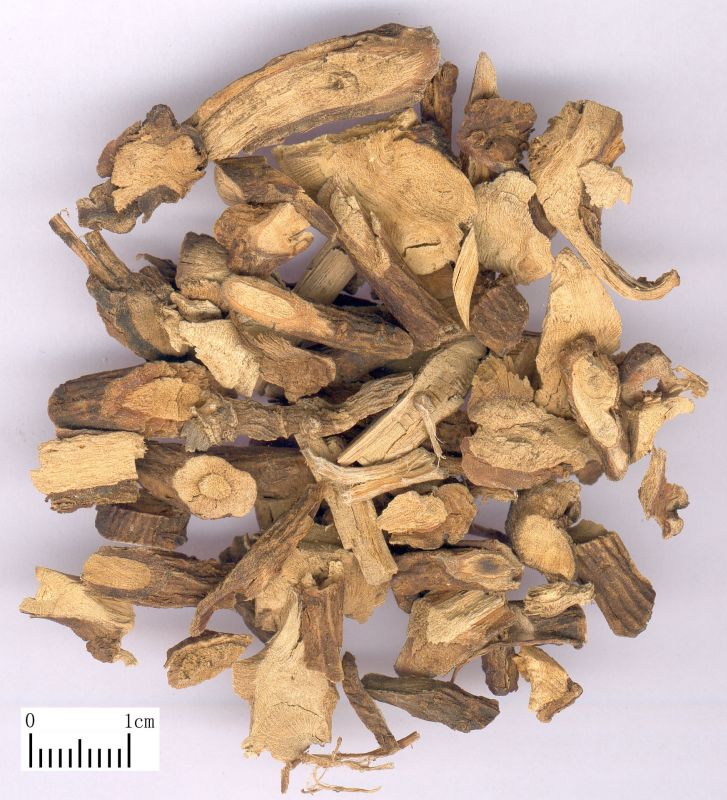Antiinfection- antibacterial, antiviral- any red hot symptoms- Full Heat
conditions.[2] Controls growth in malignant
tumors.[2]
[1] A Complete English Dictionary of Medicinal
Terms in Chinese Acupuncture and Herbalism 1981- Henry Lu Chinese Foundations
of Natural Health- The Academy of Oriental Heritage, Vancouver, Canada.
[2] Translation notes from Gary Seiford and Hocu Huhn- NSW College of Natural
Therapies. Sydney Australia (1982).
[3] Chinese Herbal Medicine Materia Medica- Dan Bensky and Andrew Gamble- Eastland
Press 1986 Seattle Washington ISBN 0-939616-15-7
Images
1.
amor719.ecrater.com
2.
tcm100.com
Matrine, oxymatrine, anagyrine, methylcytisine, sopnaranone, sopnaradin, sopnoranochromene,
sopnoradochromeme, genistein, prerocarpine, maackian, trifolirhizin, sitosterol.[1]
References
[1] Chinese Herbal Medicine Materia Medica-
Dan Bensky and Andrew Gamble- Eastland Press 1986 Seattle Washington ISBN 0-939616-15-7
 Sophora
tonkinensis. Sophora subprostrata
山
豆 根
Shān dòu gēn- "Mountain
bean root" Sophora
root Family: Leguminosae
Sophora
tonkinensis. Sophora subprostrata
山
豆 根
Shān dòu gēn- "Mountain
bean root" Sophora
root Family: Leguminosae
